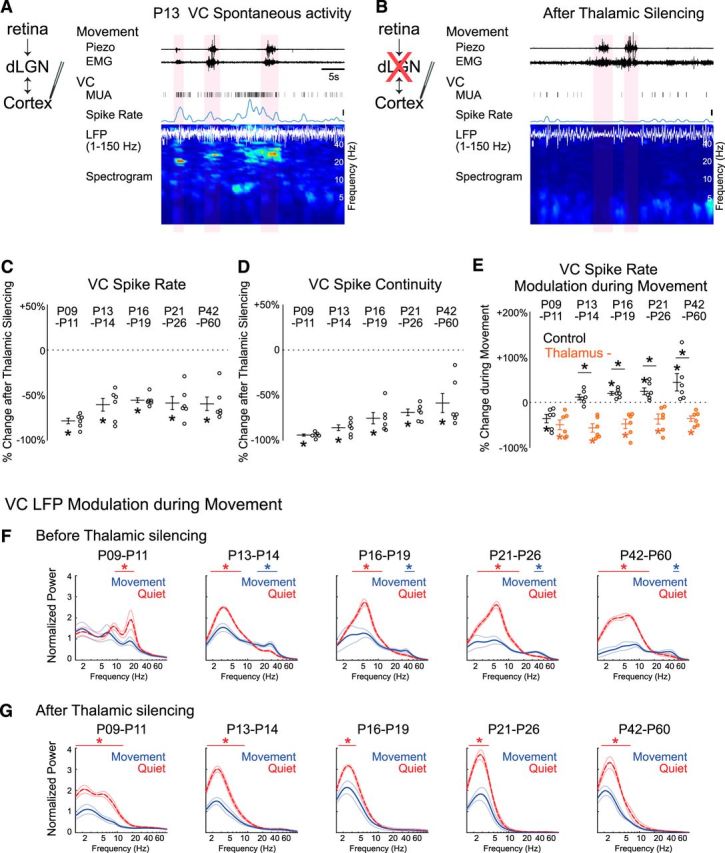Figure 3.

dLGN is required for continuous visual cortical activity modulated during movement after P13. A, B, Representative VC spontaneous activity before (A) and after thalamic silencing (B) at P13. VC MUA, spike rate, LFP, and its spectrogram are shown. Movement periods are marked by light red shades. Thalamus was silenced with local injection of 1 mm muscimol into dLGN after control recording. After thalamic silencing, VC spikes decreased and became discontinuous, and VC LFP lost beta-gamma band activity during movement. Bars represent 5 s, 10 spikes/s, and 100 μV. C, D. dLGN is the major contributor to VC spike activity throughout development. Percentage changes of VC L4 MUA spike rate (C) and continuity (D) after thalamic silencing at each age (n = 6 each; Wilcoxon signed rank test for difference from pre-silencing, *p = 0.031). E, Thalamic silencing causes suppression of VC spiking during movement. After thalamic silencing, VC spikes are negatively modulated during movement at all ages examined, a pattern usually observed only before P9–P11 in intact animals. Percentage changes of dLGN spike rate during movement relative to quiescence are shown for baseline (Control, black open circle) and following thalamic silencing (Thalamus, orange filled circle) at each age (n = 6 each; Wilcoxon signed rank test for difference (p = 0.031) from zero (*on mean) and difference between control and thalamus (*on horizontal bar). F, G, Thalamic silencing alters VC LFP frequency distribution and its modulation during movement. VC LFP spectra during movement (blue) and quiescence (red) before (F) and after thalamic silencing (G) are shown at each age. The augmentation of beta-gamma power during movement after P13 is eliminated by thalamic silencing, whereas increases in lower frequency power during quiescence remain (n = 6 for each, horizontal line shows range of significant frequencies modulated during movement (permutation test, *p < 0.05).
